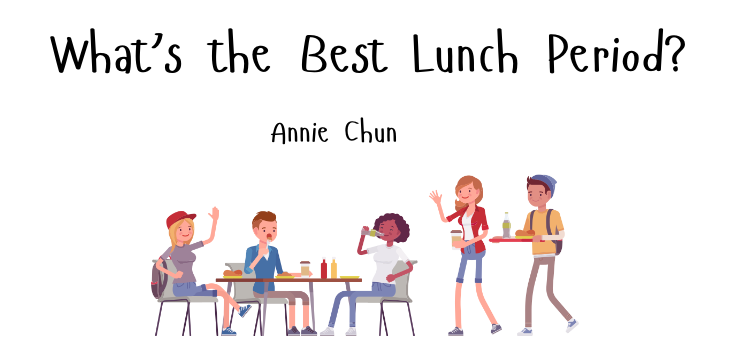When the bell rings, indicating the time to head to lunch, Oakton students make their way to the cafeteria and head to the crowded lunch line with a tray in hand, scanning all the options for the day: the standard milk, unappetizing vegetables, and pizza that is served almost every day of the week. Still, there are various alternatives. Ensuring a balanced school lunch program is essential for the well-being and academic success of millions of students across the nation. During the 2022-2023 school year, approximately 28.1 million children receive school lunch on an average day, and the stakes are high when it comes to satisfying everyone’s diverse needs. Additionally, the program must meet nutritional guidelines. A survey was conducted on a batch of Oakton High School students who attended lunch periods A through D who were asked about their thoughts and feelings about the lunch served at school.
According to the survey, 40% of students buy lunch from the school cafeteria, while 55% pack their lunch from home, and 4% of students don’t eat lunch at all. This data suggests that despite the convenience of cafeteria lunches, a significant number of students prefer to bring food from home, an indication of potential dissatisfaction with the options provided. In a smaller group of 30 Oakton students, various questions were posed to gather more detailed feedback. The survey also revealed that students want more variety, particularly in terms of desserts. When asked what they would add to the menu, the most common answers included ice cream and chocolate desserts. “ I would love to have more chocolate-y desserts like brownies,” one student mentioned on the survey. However, it’s not just the lack of sweet treats that students are concerned about. Several voiced frustrations about the lack of allergy-friendly options and halal/kosher items. “I wish they would add more allergy-friendly options because I only eat the pretzel every day,” one student from the survey noted. These concerns highlight the need for the cafeteria to expand its offering to accommodate a wider range of dietary needs. “The items have gotten better since 9th grade, but there are still some days where I do not find any appealing options,” one student with halal preferences mentioned. On the contrary, there was also a lot of positive feedback from students, with one student stating that “everything they offer is perfectly fine” and “I wouldn’t want to add anything.”
The survey also asked students to rate the different lunch periods. The most popular was B lunch, followed closely by C lunch, then A lunch, and with D lunch being the least favorite.
The survey results revealed important insights into students’ unique experiences and preferences with school lunches, ranging from positive feedback to concerns and uncertainty.
While the options aren’t horrible, there is still a lot of room for improvement. Therefore, this feedback is crucial for improving the lunch program to better serve the diverse student body.





